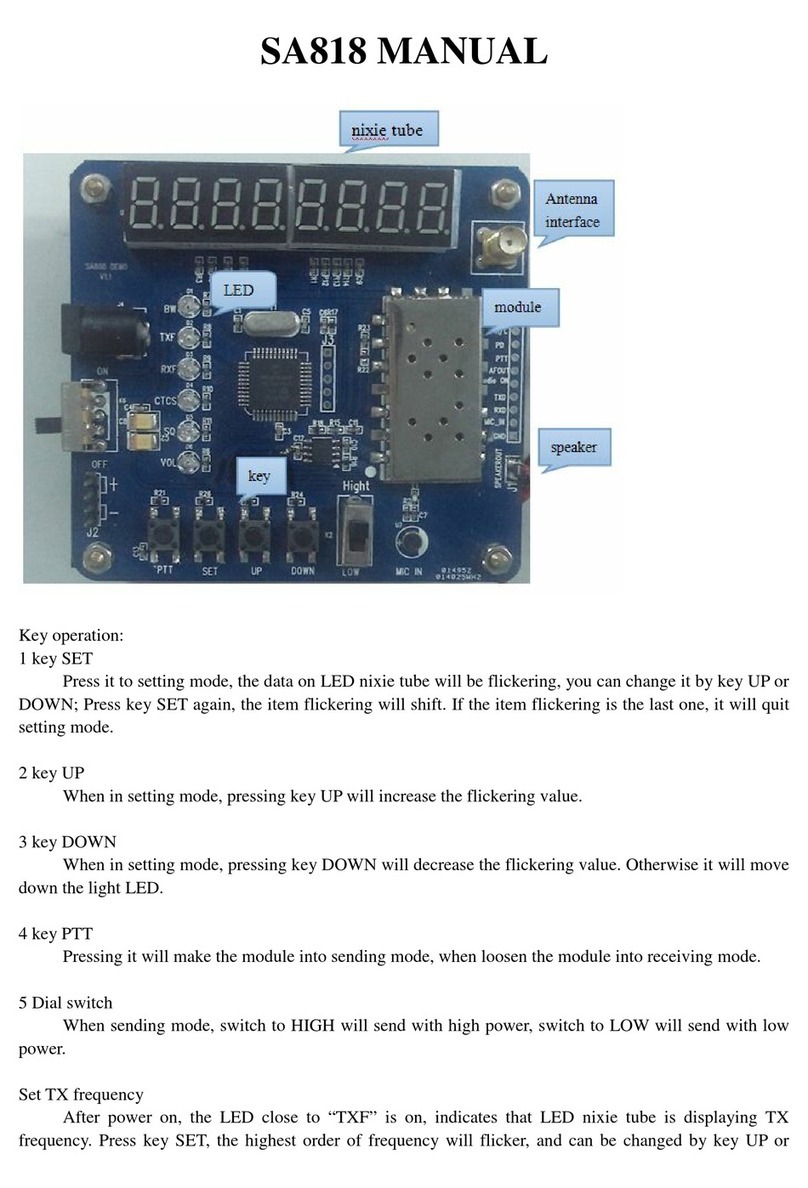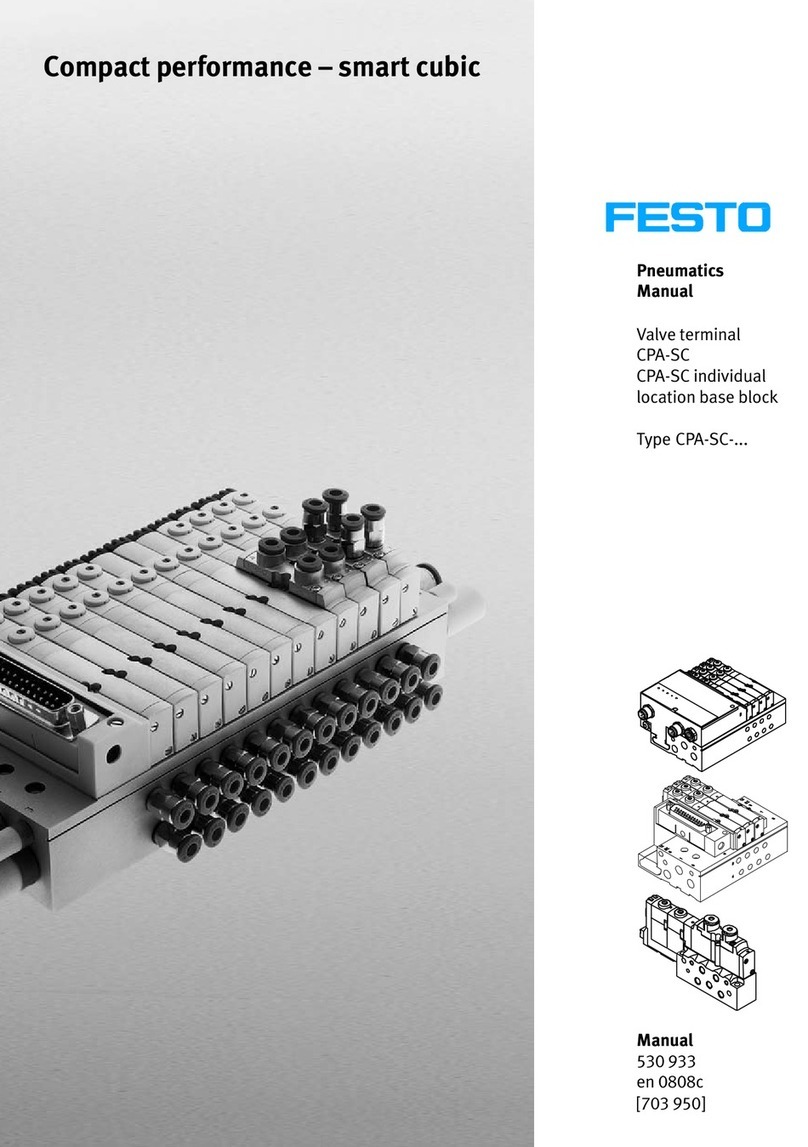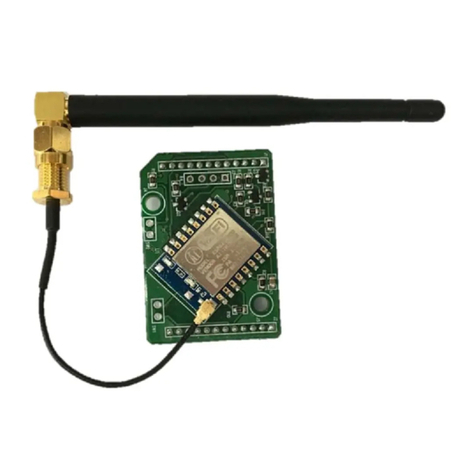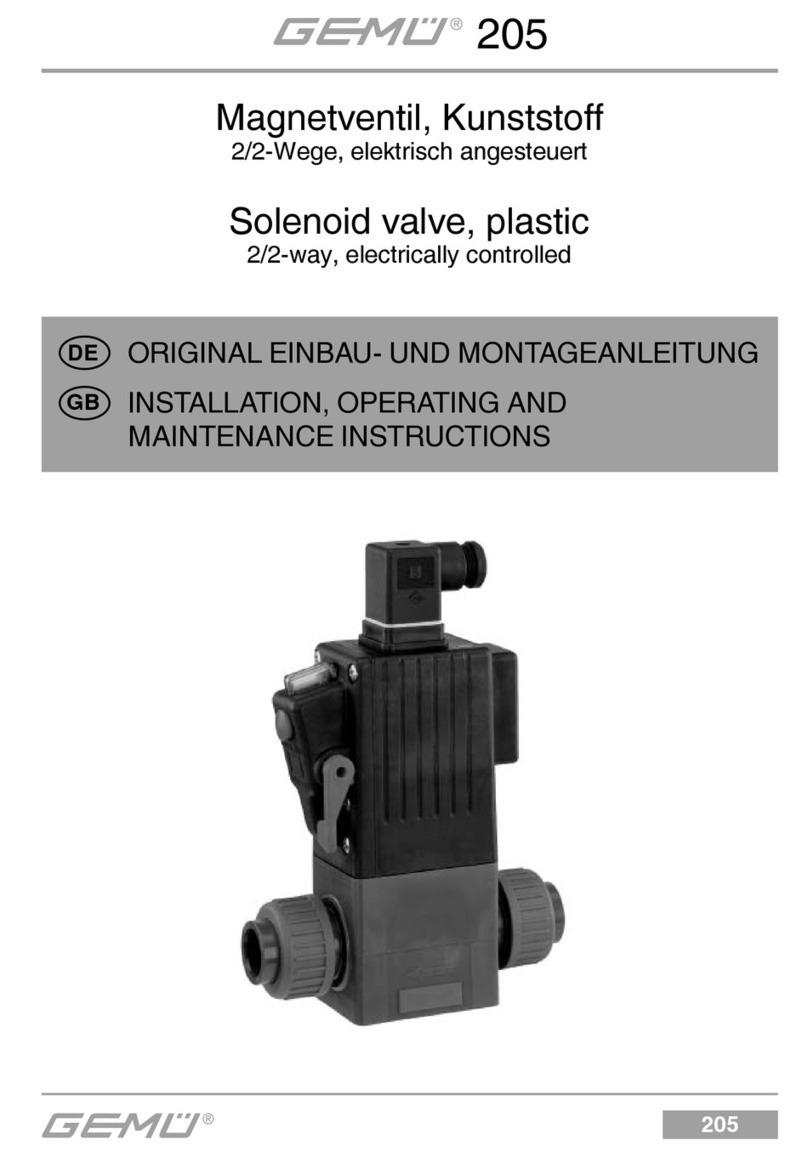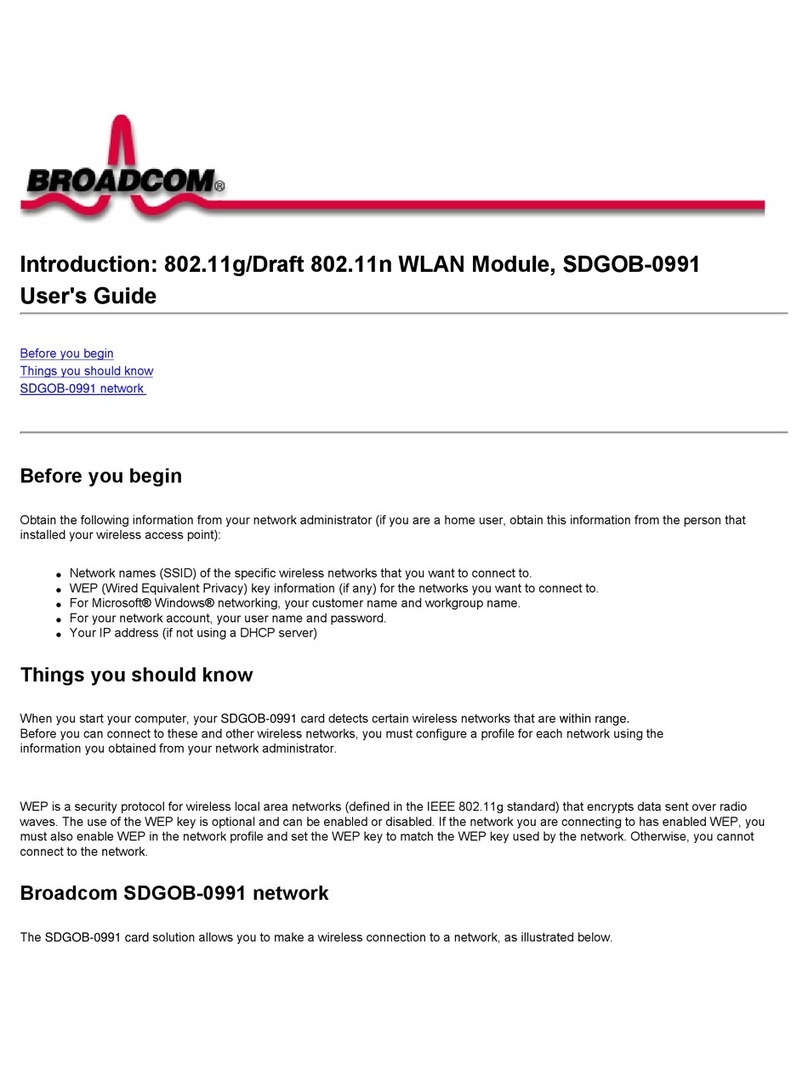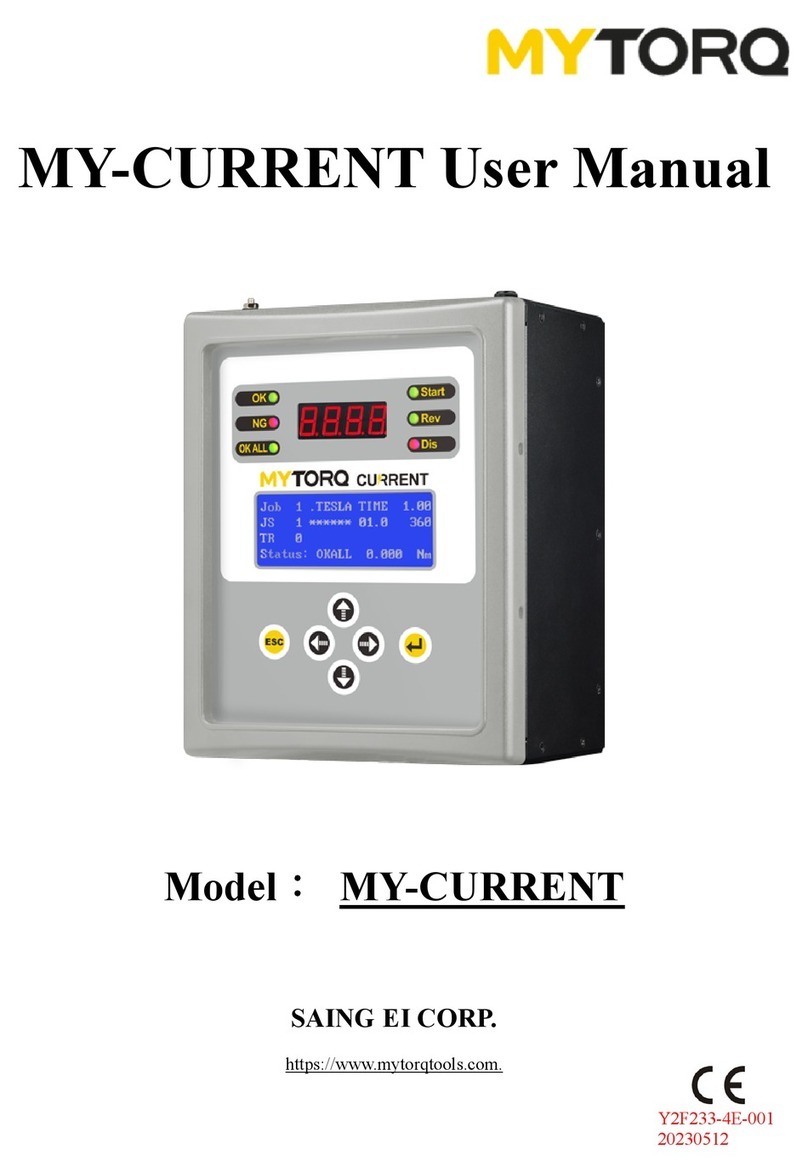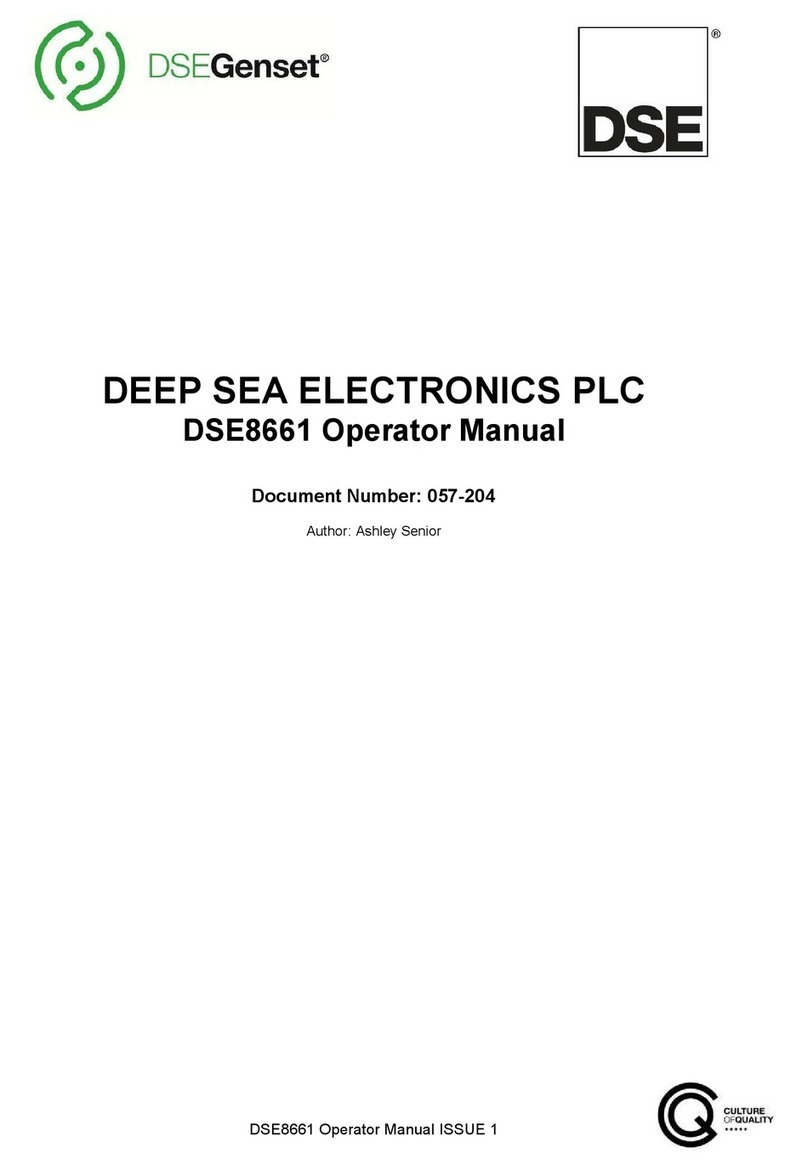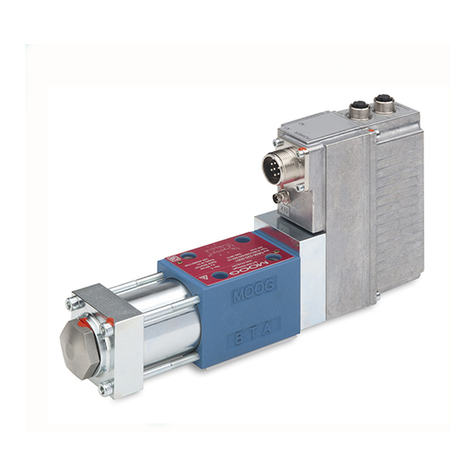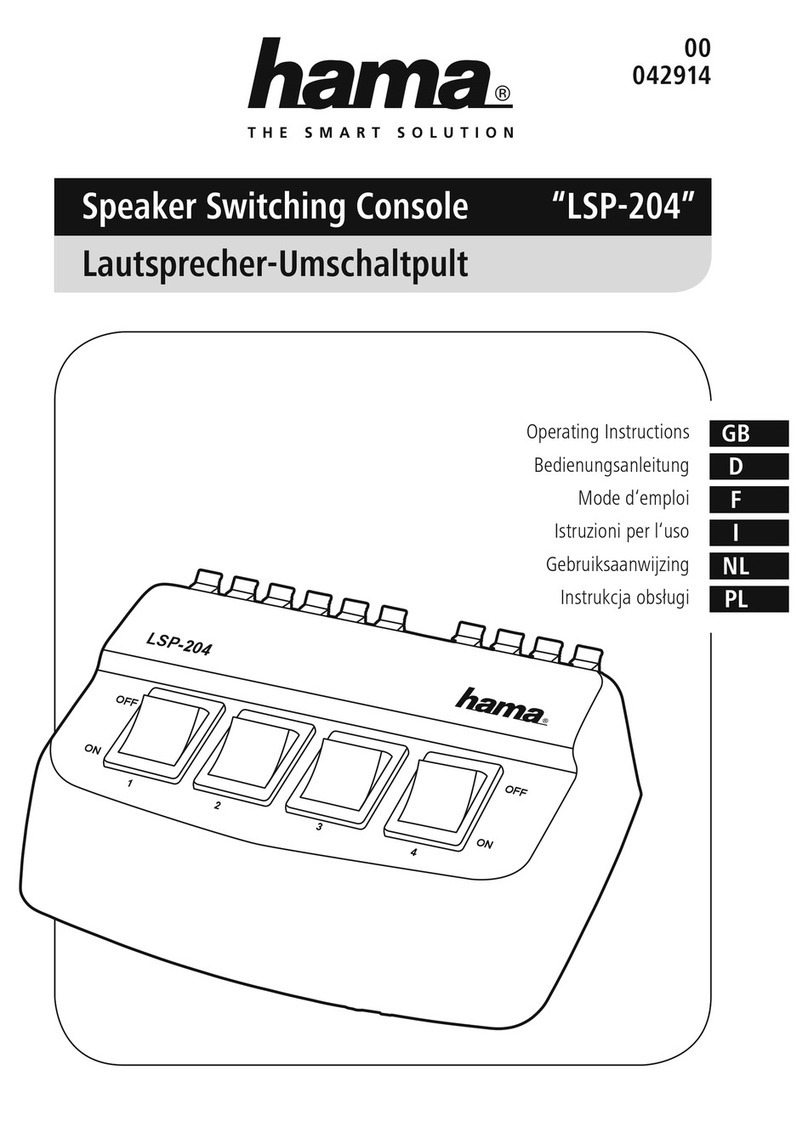Megmeet MC100 Series User manual

1
MC100-2TC/4TC Thermocouple
Module User Manual
Note:
To reduce the chance of accident, please carefully read the operating
instructions and safety precautions prior to use. Only adequately trained
personnel shall install or operate this product. In operation, strict compliance
with applicable safety rules in the industry, the operating instructions and
safety precautions in this book is required.
This manual MC100 series for the following members:
MC100-2TC Thermocouple Module
MC100-4TC Thermocouple Module
Version 1.0
Revision date January 15, 2010
BOM R29090040
1 Port Description
1.1 Port
The extension port and user port of MC100-2TC/4TC are both protected by a
cover, as shown in Figure 1-1. Removing the covers reveals the extension
port and user port, as shown in Figure 1-2.
Extension port cover
User port cover
Extension cable
P
O
W
E
R
2
4
V
R
U
N
Figure 1-1 MC100-2TC/4TC appearance
14
2
13
10
2
4
6
8
20
12
14
16
18
9
1
3
5
7
19
11
13
15
17
FG
24
V
-
L
1
+
FG
V
FG
L
2
+
FG
FG
L
3
+
FG
FG
L
4
+
FG
FG
User port
Extension port
Extension cable
L
1
-
L
2
-
L
3
-
L
4
-
P
O
W
E
R
2
4
V
R
U
N
24
+
Figure 1-2 MC100-2TC/4TC ports
The extension cable connects MC100-2TC/4TC to the system, while the
extension port connects MC100-2TC/4TC to another extension module of the
system. For details on connection, see 1.2 Connecting Into System.
The user port of MC100-2TC/4TC is described in Table 1-1.
Table 1-1 User port description
Terminal
Name
Description
1
24V+
Analog power supply 24V+
2
24V-
Analog power supply 24V-
3
·
NC
4
GND
5, 9, 13, 17
L1+, L2+, L3+, L4+
Positive poles of thermalcouples for
channels 1 to 4
7, 11, 15, 19
L1-, L2-, L3-, L4-
Negative poles of thermalcouples for
channels 1 to 4
6, 8, 10, 12,
14, 16, 18, 20
FG
Shielding GND
1.2 Connecting Into System
Through the extension cable, you can connect MC100-2TC/4TC to MC100
series basic module or other extension modules. See Figure 1-3.
Basic module Extension module
Removing extension port cover
before connection
Extension cable
Figure 1-3 Connecting into system
1.3 Wiring
The wiring of user port is shown in Figure 1-4.
L
4
+
L
4
-
100
Ω
L
1
+
L
1
-
FG
CH
4
24
V
+
24
V
-
/
converter
AGND
+
5
V
-
5
V
PGND
①
②
③
MC
1
00
-
4
TC
24
Vdc
±
10
%
Thermocouple
⑤
100
Ω
100
Ω
CH
1
100
Ω
FG
④
50
mA
DC
DC
Figure 1-4 Wiring of MC100-2TC/4TC user port
The circled 1 ~ 6 stands for the six points to be observed during wiring:
1. Thermocouple signals are connected through screen compensation cables,
which should be routed separate from power cables or other EMI-generating
cables. Long compensation cables are susceptible to EMI, so the
compensation cables should be advisably shorter than 100m. Compensation
cable has impedance, which can cause measurement error. This problem
can be addressed through characteristics adjustment. For details, see 3
Setting Characteristics.
2. If strong EMI exists, connect the FG and PG terminals together.
3. Properly ground the module’s PG terminal.
4. The basic module’s 24Vdc auxiliary power or any qualified external power
supply can be used to feed the module’s analog circuit.
5. Short the positive and negative terminals of unused channels to avoid
detecting error data from that channel.
2 Indices
2.1 Power Supply
Table 2-1 Power supply
Item
Description
Analoge circuit
24Vdc (-15%~20%), maximum allowable ripple voltage: 5%,
50mA (from the basic module or external power supply)
Digital circuit
5Vdc, 72mA (from basic module)
2.2 Performance
Table 2-2 Performance
Item
Index
Celsius(°C)
Fahrenheit (°F)
Input signal
Thermocouple: type K, J, E, N, T, R or S (all accessible
to each channel), 4 channels
Conversion speed
(240ms±2%)ms × 4 channels (no conversion for unused
channels)
Rated temperature
range
Type K
-100°C~1200°C
Type K
-148°F ~ +2192°F
Type J
-100°C~1000°C
Type J
-148°F ~ +1832°F
Type E
-100°C~1000°C
Type E
-148°F ~ +1832°F
Type N
-100°C~1200°C
Type N
-148°F ~ +2192°F
Type T
-200°C ~ +400°C
Type T
-328°F ~ +752°F
Type R
0°C ~ 1600°C
Type R
32°F ~ 2912°F

2
Item
Index
Celsius(°C)
Fahrenheit (°F)
Type S
0°C ~ 1600°C
Type S
32°F ~ 2912°F
Digital output
12-digit AD conversion, 16-digit complement for storage
Type K
-1000 ~ +12000
Type K
-1480 ~ +21920
Type J
-1000 ~ +10000
Type J
-1480 ~ +18320
Type E
-1000 ~ +10000
Type E
-1480 ~ +18320
Type N
-1000 ~ +12000
Type N
-1480 ~ +21920
Type T
-2000 ~ +4000
Type T
-3280 ~ +7520
Type R
0 ~ 16000
Type R
320 ~ 29120
Type S
0 ~ 16000
Type S
320 ~ 29120
Lowest resolution
Type K
0.3°C
Type K
0.54°F
Type J
0.2°C
Type J
0.36°F
Type E
0.3°C
Type E
0.54°F
Type N
0.3°C
Type N
0.54°F
Type T
0.2°C
Type T
0.36°F
Lowest resolution
Type R
0.5°C
Type R
0.9°F
Type S
0.5°C
Type S
0.9°F
Accuracy
± (0.5% full range+1°C), water freezing point: 0°C/32°F
Isolation
Between analog circuit and digital circuit: photocoupler.
Between analog circuit and input 24Vdc power: internal
isolation. Between analog channels: none
2.3 Buffer Memory
MC100-2TC/4TC exchanges data with the basic module through Buffer
Memory (BFM). After MC100-2TC/4TC is set through the host software, the
basic module will write data into MC100-2TC/4TC BFM to set the state of
MC100-2TC/4TC, and display the data from MC100-2TC/4TC on the host
software interface. See figures 4-1 ~ 4-8.
Table 2-3 describes the contents of the BFM of MC100-2TC/4TC.
Table 2-3 BFM contents
BFM
Content
Default
Property
#100 ~ #103
Average temperature of
CH1~CH4
R
#200 ~ #203
Current temperature of
CH1~CH4
R
#300
Error status word 0
R
#301
Error status word 1
R
#600
Channel mode word
0x0000
RW
#700 ~ #703
Sampling times respectively
for averages of CH1 ~ CH3
8
RW
#900
CH1-D0
0 (input mode 0)
RW
#901
CH1-A0
0 (input mode 0)
RW
#902
CH1-D1
12000 (input mode 0)
RW
#903
CH1-A1
12000 (input mode 0)
RW
#904
CH2-D0
0 (input mode 0)
RW
#905
CH2-A0
0 (input mode 0)
RW
#906
CH2-D1
12000 (input mode 0)
RW
#907
CH2-A1
12000 (input mode 0)
RW
#908
CH3-D0
0 (input mode 0)
RW
#909
CH3-A0
0 (input mode 0)
RW
#910
CH3-D1
12000 (input mode 0)
RW
#911
CH3-A1
12000 (input mode 0)
RW
#912
CH4-D0
0 (input mode 0)
RW
#913
CH4-A0
0 (input mode 0)
RW
#914
CH4-D1
12000 (input mode 0)
RW
#915
CH4-A1
12000 (input mode 0)
RW
#3000
Cold end temperature
For test
R
#4094
Module software version
0x1000
R
#4095
Module ID
0x4041
R
Note:
1. CH1 stands for channel 1; CH2, channel 2; CH3, channel 3, and so on.
2. Property explanation: R means read only. An R element cannot be
written. RW means read and write. Reading from a non-existent
element will get 0.
3. BFM#200 ~ BFM#203: current temperature. Unit: 0.1°C/°F (depending on
the value of BFM#600). The average value are stored in
BFM#100-BFM#103.
4. BFM#300 error status information is shown in Table 2-4.
Table 2-4 BFM#300 status information
Bit status of BFM#300
ON (1)
OFF (0)
b0: error
b1 or b2 is ON, AD conversion
of all channels stopped
No error
b2: power failure
24Vdc power supply failed
Power supply normal
b3: hardware fault
AD converter or other
hardware faulty
Hardware normal
b10: digital range error
Digital output after AD
conversion outside the range
of -2048 ~ 2047
Digital output normal
b12 ~ b15: reserved
5. BFM#301 error status information is shown in Table 2-5.
Table 2-5 BFM#301 status information
Channel
Bit
ON (1)
OFF (0)
1
b0
CH1 temperature lower than lower limit
CH1 normal
b1
CH1 temperature higher than upper limit
CH1 normal
2
b2
CH2 temperature lower than lower limit
CH2 normal
b3
CH2 temperature higher than upper limit
CH2 normal
3
b4
CH3 temperature lower than lower limit
CH3 normal
b5
CH3 temperature higher than upper limit
CH3 normal
4
b6
CH4 temperature lower than lower limit
CH4 normal
b7
CH4 temperature higher than upper limit
CH4 normal
Reserved
b8 ~ b15
6. BFM#600: channel mode selection, used to set the working modes of CH1
~ CH4. See Figure 2-1 for their correspondence.
×4
0x×3×2×1
Working mode for CH1
600#
Working mode for CH2
Working mode for CH3
Working mode for CH4
Figure 2-1 Mode setting element vs. channel
The exact meaning of the X in the channel mode is shown in Table 2-6. The
conversion time of every channel is 240ms. When a channel is set closed, it
will not perform AD conversion, thereby reducing the total conversion time.
Table 2-6 Meaning of X in channel mode
No.
X (hexadecimal)
Meaning
1
0
K type thermocouple. Digital signal unit: 0.1°C
2
1
K type thermocouple. Digital signal unit: 0.1°F
3
2
J type thermocouple. Digital signal unit: 0.1°C
4
3
J type thermocouple. Digital signal unit: 0.1°F
5
4
E type thermocouple. Digital signal unit: 0.1°C
6
5
E type thermocouple. Digital signal unit: 0.1°F
7
6
N type thermocouple. Digital signal unit: 0.1°C
8
7
N type thermocouple. Digital signal unit: 0.1°F
9
8
T type thermocouple. Digital signal unit: 0.1°C
10
9
T type thermocouple. Digital signal unit: 0.1°F
11
A
R type thermocouple. Digital signal unit: 0.1°C
12
B
R type thermocouple. Digital signal unit: 0.1°F
13
C
S type thermocouple. Digital signal unit: 0.1°C
14
D
S type thermocouple. Digital signal unit: 0.1°F
15
E
Channel closed
16
F
Channel closed
7. BFM#700 ~ BFM#703: average sampling times setting. Range: 1 ~ 256. If
the setting is outside this range, the value will be reset to the default 8.
5. BFM#900 ~ BFM#915: channel characteristics setting data register. Use
two points to define the channel characteristic. D0 and D1 are the channel
digital output, in the unit of 0.1°C. A0 and A1 are the actual temperature input
of the channel, also in the unit of 0.1°C. Each channel occupies 4 words.
You can change the channel characteristic by changing D0 and D1. The
setting range of D0 is -1000~1000 (0.1°C); D1, 11,000~13,000 (0.1°C). If the
setting is outside this range, MC100-2TC/4TC will not accept it, but maintain
the original valid setting.
Note that the characters are all in 0.1°C unit. Convert Fahrenheit parameters

3
as per the following formula before using them in the characteristic setting:
Celsius = 5/9 × (Fahrenheit -32)
9. BFM#4094: software version information, displayed automatically as
Module Version in MC100-2TC/4TC Configuration dialogue box of the host
software, as shown in Figure 4-1.
10. BFM#4095: module ID. The ID of MC100-2TC/4TC is 0x4041. The PLC
user program can use this code to identify the module before transceiving
data.
3 Characteristic Setting
The input channel characteristic of MC100-2TC/4TC is the linear relationship
between the channel’s analog input A and digital output D. It can be set by
the user. Each channel can be considered as the model shown in Figure 3-1.
As it is of linear characteristic, the channel characteristic can be defined by
just two points: P0 (A0, D0) and P1 (A1, D1), where D0 is the channel’s
digital output corresponding to analog input A0, and D1 is the channel’s
digital output corresponding to analog input A1.
Channel D
Digital output
A
Analog input
Channel model
D1
A(0.1℃)
Channel characteristic setting
D0
A0 A1
P 1
P0
D(0.1℃)
Figure 3-1 MC100-2TC/4TC channel characteristic setting
The channel characteristic setting is used to correct the onsite linear error in
MC100-2TC/4TC measurement caused by the different ambient
temperatures and compensation cables.
To simplify the operation process without affecting functions, A0 and A1 are
respectively fixed to 0 and 12,000 (unit: 0.1°C) in the present mode. That is to
say, the A0 and A1 in Figure 3-1 are respectively 0 and 12,000 (unit: 0.1°C).
Users cannot change their values.
If you just set the channel mode without changing D0 and D1, the channel
characteristic vs. 0 mode should be as shown in Figure 3-2.
12000
12000
-1000
0
Default (not adjusted)
-1000
A(0.1
D(0.1°
C)
°
C)
Figure 3-2 Characteristic vs. 0 mode without changing D0 and D1
Note that when the mode is set to 1 or 3, the output will be in 0.1°F unit, and
the temperature data read from the output data zone will be in 0.1°F unit. But
the data in the channel characteristic setting zone will still be in 0.1°C unit,
which means the data in the channel characteristic setting zone is always in
0.1°C unit. Keep this in mind when changing D0 and D1.
You can change the characteristics by changing D0 and D1. The setting
range of D0 is -1000~1000 (0.1°C); D1, 11000~13000 (0.1°C). If the setting is
outside this range, MC100-2TC/4TC will not accept it, but maintain the
original valid setting. Figure 3-3 provides you an example of changing K type
and J type thermocouple characteristic when the MC100-2TC/4TC measured
value is 5°C (41°F) higher the actual value.
12000
-1000
0
- 950
A (0.1 )
D ( 0. 1 °)
P0
P1
- 50
11950
D 0 = - 50
D 1 = 11950
C
°
C
Figure 3-3 Changing characteristic
4 Application Example
4.1 Basic Application
Example: Connect channels 1 and 2 of MC100-2TC/4TC respectively to K
and J type thermocouples with Celsius output, connect channel 3 to K type
thermocouples with Fahrenheit output, and close CH4. Set the average
sampling times of CH1 ~ CH3 to 4, and use data registers D1 ~ D3 to receive
the average value.
The setting interface of output CH1 is shown in Figure 4-1. After the setting,
click the downward arrow button to continue to set CH 2 ~ CH4, whose
setting interfaces are shown in figures 4-2 ~ 4-4. For detailed software usage,
see MC200/100 Series PLC Programming Manual.
Figure 4-1 CH1 setting interface
Figure 4-2 CH2 setting interface
Figure 4-3 CH3 setting interface

4
Figure 4-4 CH4 setting interface
4.2 Changing Characteristics
Example: Connect CH1 of MC100-2TC/4TC to K thermocouple with Celsius
output, connect CH2 to J type thermocouple Fahrenheit output. Close CH3
and CH4. Set characteristics of channels 1 and 2 as per Figure 3-3. Set the
average sampling times to 4 and use registers D1 and D2 to receive the
average value.
Figure 4-5 Changing CH1 characteristic
Figure 4-6 Changing CH2 characteristic
Figure 4-7 Changing CH3 characteristic
Figure 4-8 Changing CH4 characteristic
5 Operation Inspection
5.1 Routine Inspection
1. Check that the wiring of analog input meets the requirements (see 1.3
Wiring).
2. Check that the extension cable of MC100-2TC/4TC is properly inserted in
the extension port.
3. Check that the 5V and 24V power supplies are not overloaded. Note: The
digital circuit is powered by the basic module through extension cable.
4. Check the application, make sure the operation method and parameter
range are correct.
5. Set the MC100 basic module to RUN state.
5.2 Inspection Upon Fault
In case of abnormality, check the following items:
●The status of the POWER indicator
ON: the extension cable is properly connected;
OFF: check the extension cable connection and the basic module.
●The wiring of analog input
●The status of the 24V indicator
ON: 24Vdc power supply normal;
OFF: 24Vdc power supply possibly faulty, or MC100-2TC/4TC faulty.
●The status of the RUN indicator
Flash quickly: MC100-2TC/4TC in normal operation;
Flash slowly or OFF: Check the Error Status in MC100-2TC/4TC
Configuration dialogue box through the host software.
Notice
1. The warranty range is confined to the PLC only.
2. Warranty period is 18 months, within which period Megmeet Network
Power conducts free maintenance and repairing to the PLC that has any fault
or damage under the normal operation conditions.
3. The start time of warranty period is the delivery date of the product, of
which the product SN is the sole basis of judgment. PLC without a product
SN shall be regarded as out of warranty.
4. Even within 18 months, maintenance will also be charged in the following
situations:
Damages incurred to the PLC due to mis-operations, which are
not in compliance with the User Manual;
Damages incurred to the PLC due to fire, flood, abnormal voltage,
etc;
Damages incurred to the PLC due to the improper use of PLC
functions.
5. The service fee will be charged according to the actual costs. If there is any
contract, the contract prevails.
6. Please keep this paper and show this paper to the maintenance unit when
the product needs to be repaired.
7. If you have any question, please contact the distributor or our company
directly.

5
Shenzhen Megmeet Control Technology Co.,Ltd
Address: 5th Floor,Block B,Ziguang Information Harbor, Langshan Rd,
Science& Technology Park, Nahshan District, Shenzhen
Homepage: www.megmeet.com
Copyright © 2006 by Shenzhen Megmeet Control Technology Co.,Ltd
All rights reserved. The contents in this document are subject to change
without notice.
This manual suits for next models
2
Table of contents
Other Megmeet Control Unit manuals
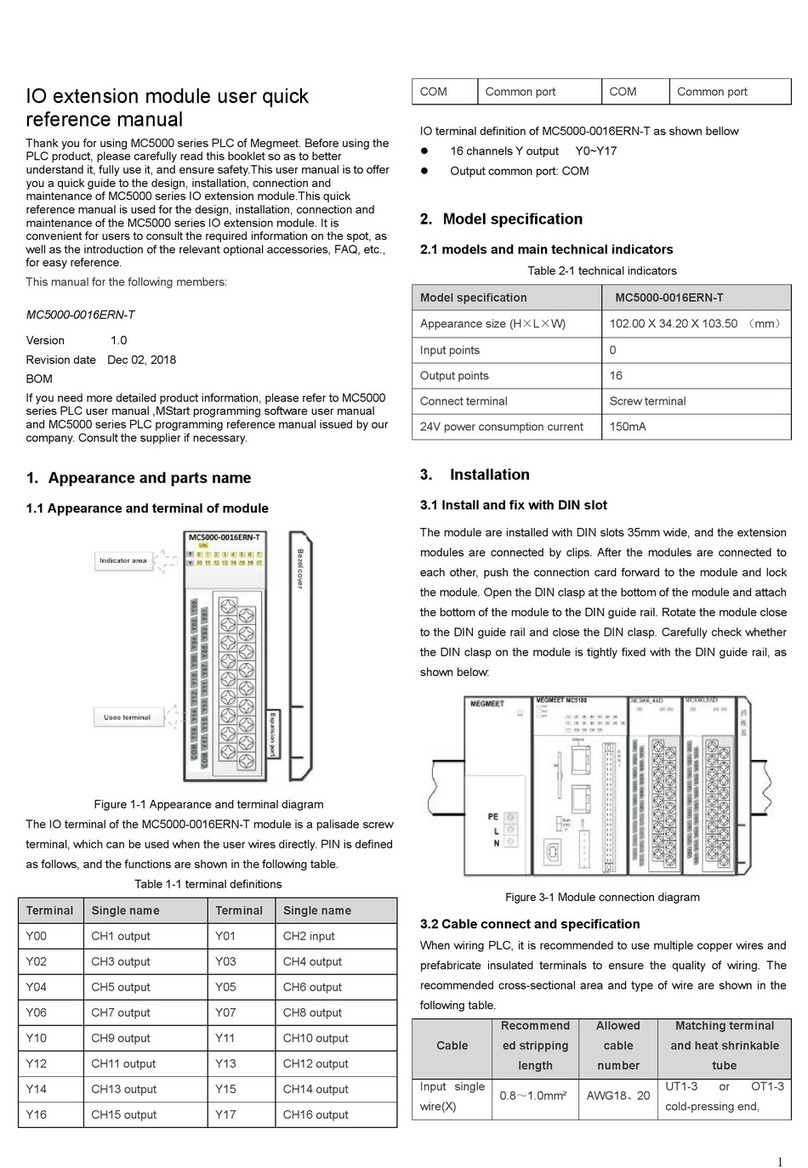
Megmeet
Megmeet MC5000 Series User manual

Megmeet
Megmeet MC200-5AM User manual
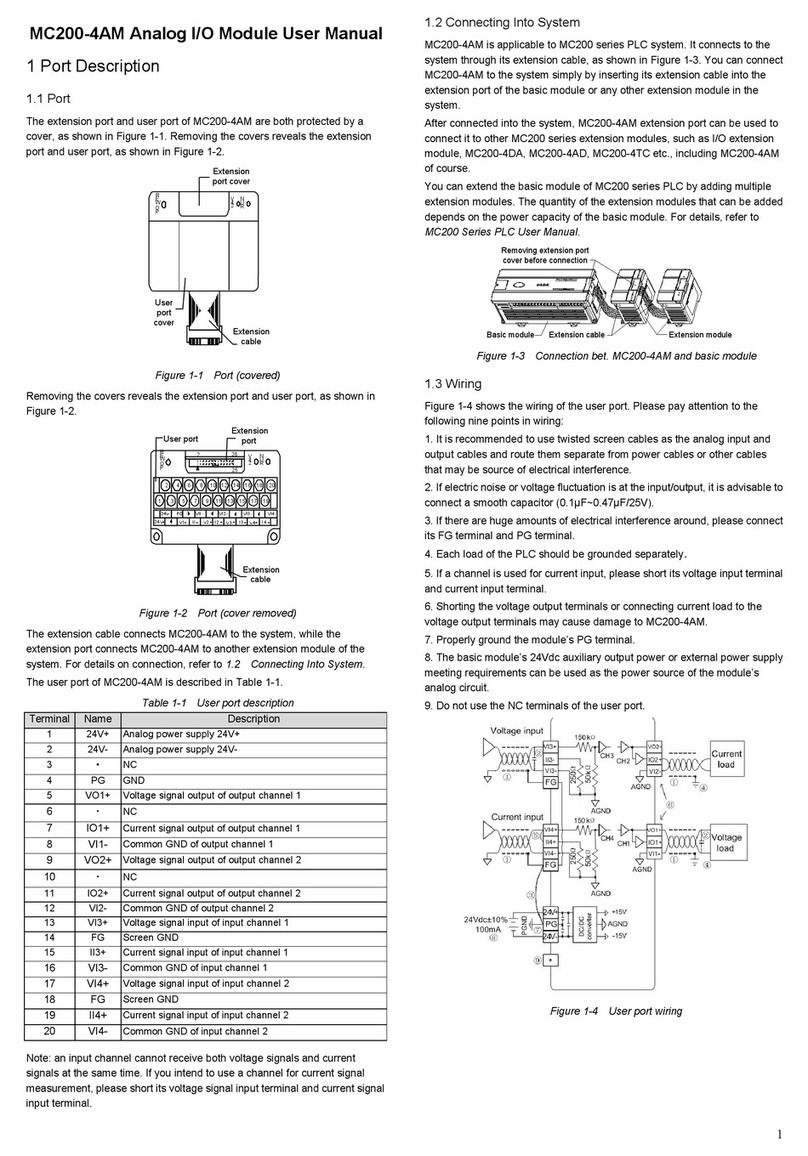
Megmeet
Megmeet MC200-4AM User manual

Megmeet
Megmeet MC5000 Series User manual
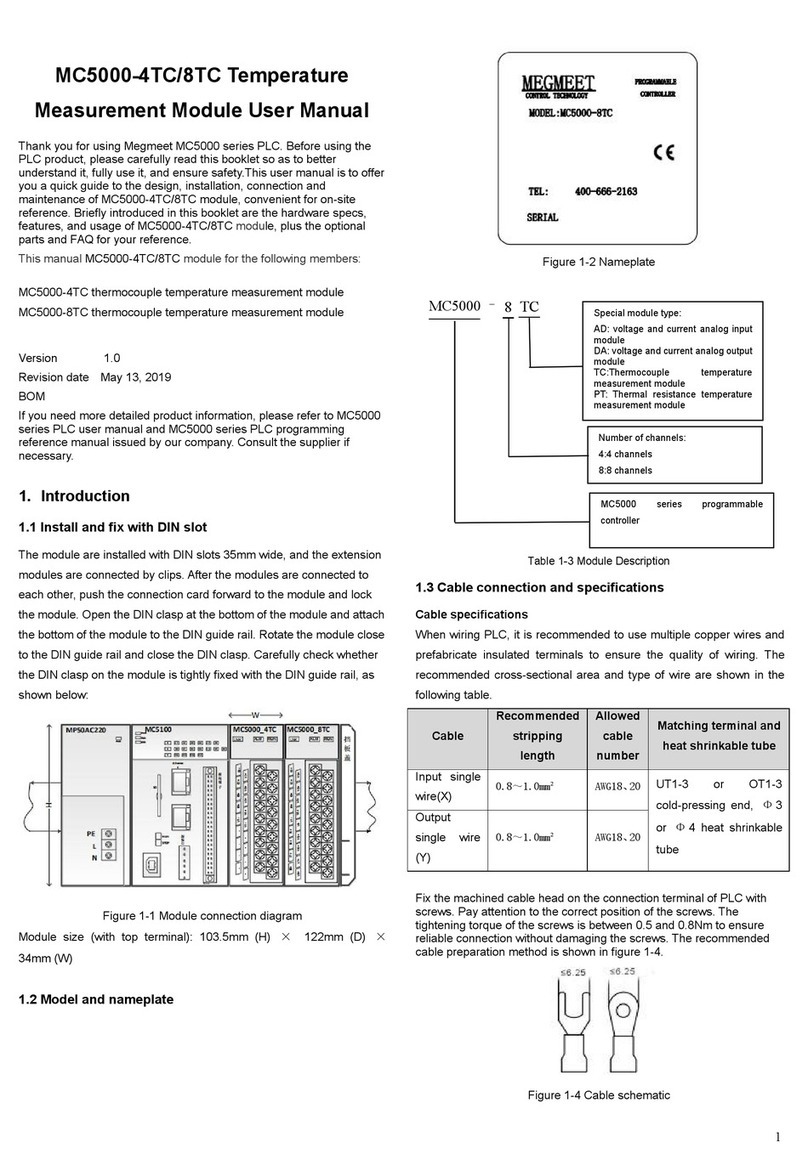
Megmeet
Megmeet MC5000 Series User manual
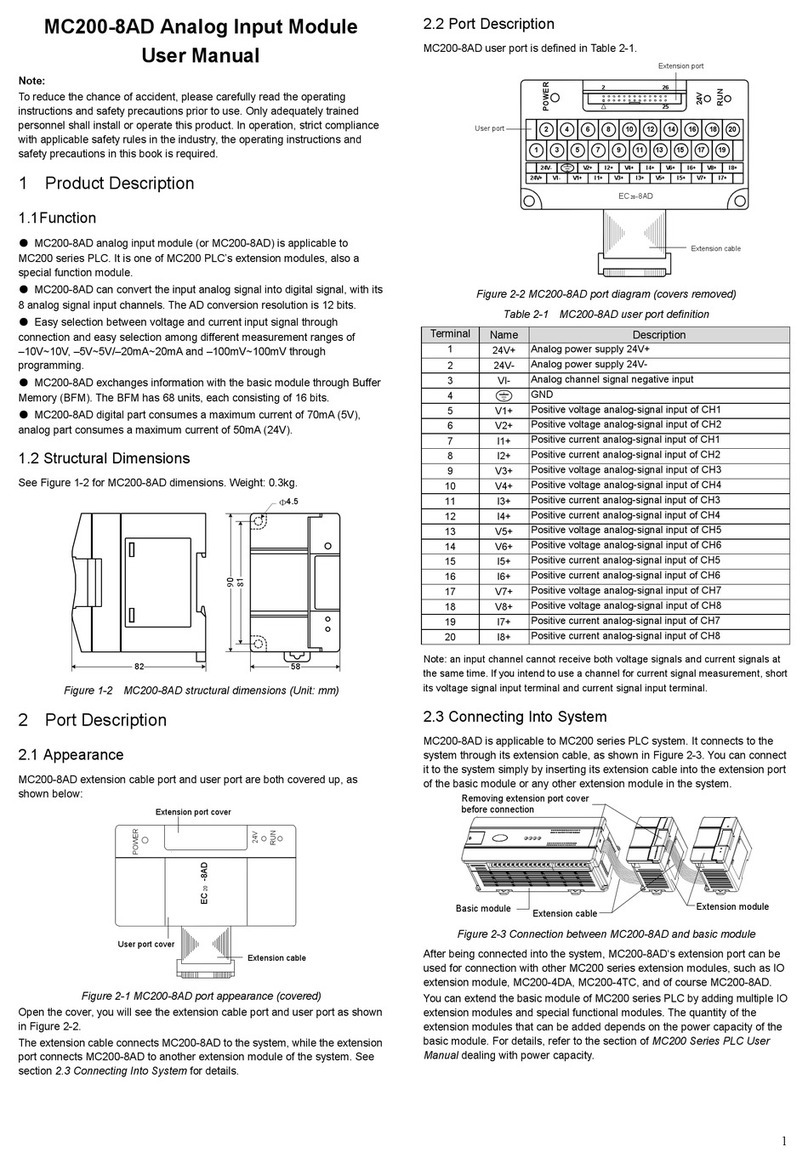
Megmeet
Megmeet MC200-8AD User manual

Megmeet
Megmeet MC5000 Series User manual

Megmeet
Megmeet MC5000 Series User manual
Popular Control Unit manuals by other brands

Meinberg
Meinberg IMS-MRI Setup guide

Warner
Warner CBC-300 Series Installation & operating instructions
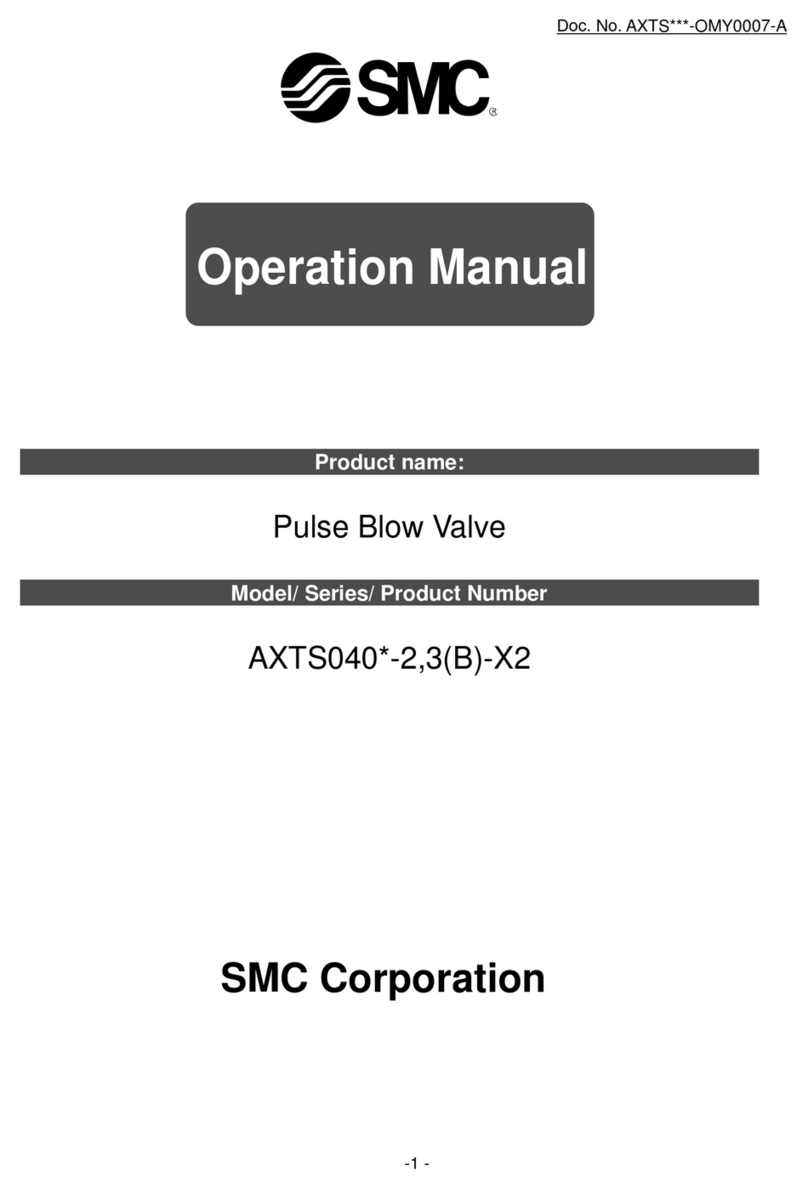
SMC Networks
SMC Networks AXTS040 3 X2 Series Operation manual

Victaulic
Victaulic FireLock 247 Series installation instructions

FAAC
FAAC 624 BLD manual

Sentiotec
Sentiotec Pro C3 Instructions for installation and use
